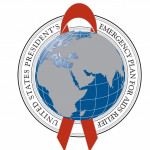Today, a majority of new transmissions of HIV, mother-to-child transmissions of the virus and AIDS-related deaths occur in nations in which less than 4.5% of the population is living with the virus, aidsmap reports. Additionally, such lower-prevalence countries had lower rates of antiretroviral (ARV) treatment among those living with the virus as well as early diagnosis of HIV among infants.
International aid for HIV, including that coming from the U.S. President’s Emergency Plan for AIDS Relief (PEPFAR) and the Global Fund, favors funneling resources into high-prevalence countries. PEPFAR prioritizes 13 such nations (which is not to say it does not also spend resources elsewhere) and has seen some dramatic evidence of recent success in both driving up treatment rates and driving down new infections in certain sub-Saharan African nations.
But is such progress leaving behind those living with and at risk for the virus in lower-prevalence nations?
Publishing their findings in the Journal of Virus Eradication, researchers analyzed data from the UNAIDSinfo database for 2017, excluding nations in North America, Oceania and Western Europe. They looked at 56 nations with at least 40,000 residents living with the virus. Together, the HIV populations of these countries comprise 88% of all those living with the virus worldwide, 87% of new infections and 89% of AIDS-related deaths.
The cumulative size of the HIV population in 12 high-prevalence nations, all of them in sub-Saharan Africa, was 16.7 million people. The 44 lower-prevalence nations, half of which were sub-Saharan Africa, were home to 15.1 million people with HIV.
The rate of new HIV transmissions per 100 people living with HIV was 4.1 cases in high-prevalence nations, compared with 5.8 cases in lower-prevalence countries.
Sixty-seven percent of adults living with HIV in high-prevalence nations were taking ARVs, compared with 47% of those in lower-prevalence countries. There was a positive correlation between the proportion of a nation’s population living with the virus, known as HIV prevalence, and its proportion of people with the virus who were on ARVs.
A total of 306,100 people died of AIDS-related causes in high-prevalence nations, compared with 530,000 in lower-prevalence countries.
The lower the HIV prevalence in a nation, the lower the proportion of HIV-positive mothers who received interventions to prevent mother-to-child transmission of the virus. Ninety-one percent of pregnant women with HIV received such interventions in high-prevalence nations, compared with 54% in lower-prevalence countries.
A respective 8% and 17% of babies born to HIV-positive mothers contracted the virus in high- and lower-prevalence nations. A respective 71% and 30% of newborns with HIV were diagnosed early in each of the two types of nations.
Higher HIV prevalence was associated with higher ARV treatment rates among children. An average of 64% of children living with HIV in high-prevalence nations were on treatment for the virus, compared with 29% of those in lower-prevalence nations.
To read the aidsmap article, click here.
To read the study abstract, click here.







Comments
Comments